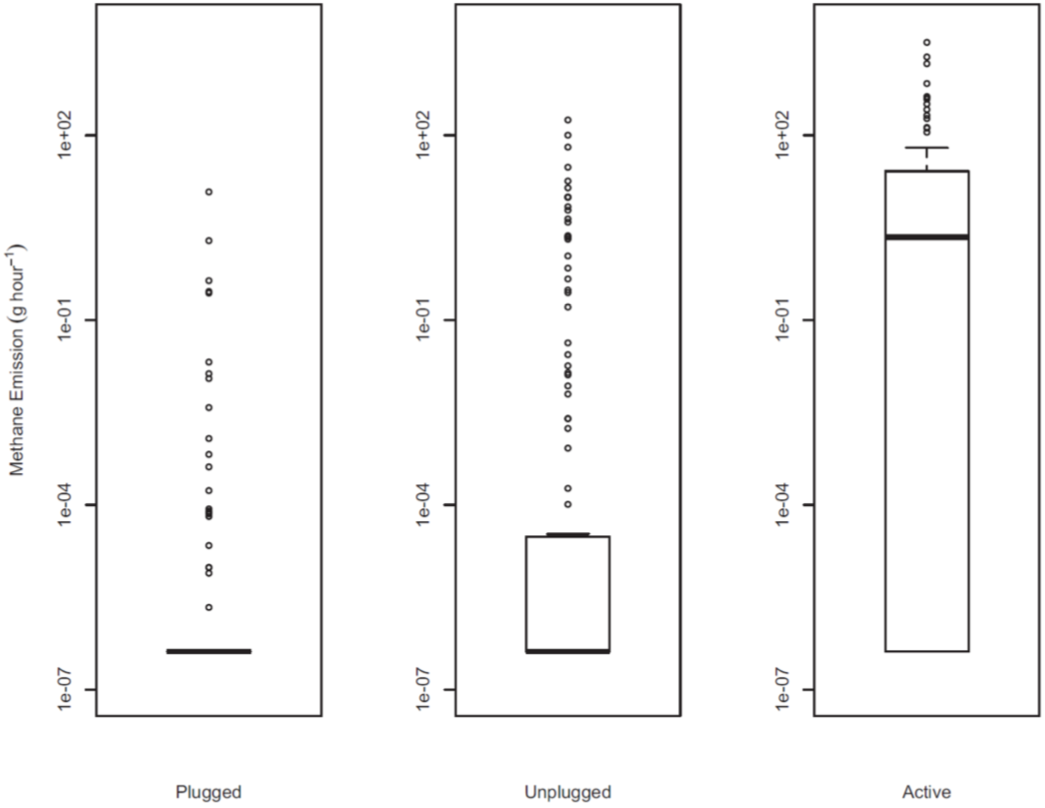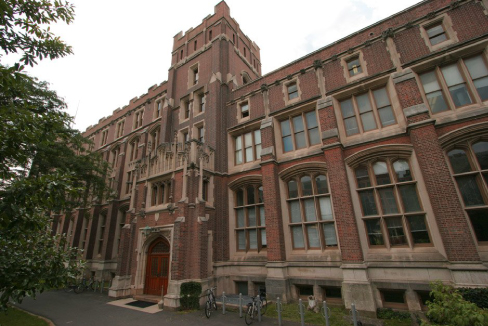Principal Investigator
At a Glance
Methane (CH4) is a significant greenhouse gas. After carbon dioxide, it is the second most important anthropogenic greenhouse gas affecting Earth’s climate. Researchers report widespread underestimation of methane leakage from both abandoned wells and ongoing oil and gas operations.
Research Highlight
In 2014, Mary Kang, a Ph.D. student in the Celia research group, led first-of-its-kind fieldwork to measure rates of methane leakage from old abandoned wells (Kang et al., 2014). These measurements were made in Pennsylvania, the location of the nation’s first commercial oil well. The data indicated that leakage from old wells contributed between five and eight percent of the total estimated anthropogenic methane emissions for the state. This source of anthropogenic methane was not previously recognized, and therefore not included in any emissions inventories at the time. These and similar follow-up measurements prompted the US Environmental
Protection Agency (EPA) to include leakage from abandoned wells in their current greenhouse gas emissions inventory (US EPA, 2018).
Kang and her colleagues followed this work by identifying well characteristics that are responsible for high leakage rates in the ~15% of the wells considered “high emitters” (Kang et al. 2016). They also performed an economic and policy analysis aimed at evaluating strategies to mitigate leaking abandoned wells (Kang et al. 2019). More recently, post-doctoral fellow Stuart Riddick conducted fieldwork to measure leakage rates from a wide range of wells, both abandoned and operating, in West Virginia (Riddick et al. 2019a) (Figure 8.1). He also estimated leakage rates from several offshore platforms in the North Sea (Riddick et al., 2019b).

Boxplots of collated emission data from Plugged, unplugged, and active conventional wells in West Virginia. From Riddick et al. (2019a).
The West Virginia measurements involved 112 plugged and abandoned wells, 147 unplugged and abandoned wells, and 79 operating conventional wells. The research team estimated emission factors of 0.1 g CH4 h-1 and 3.2 g CH4 h-1 for the plugged and unplugged abandoned wells, respectively, while the methane emission factor for active conventional wells was estimated to be 138 g CH4 h-1. There was no discernable correlation with well age or well operator. For context, the measured leakage rates for plugged and unplugged wells in Pennsylvania, as reported by Kang et al (2014), were 0.045 g CH4 h-1 (in non-coal areas; coal areas require venting and leak at 43 g CH4 h-1) and 22 g CH4 h-1, respectively. Leakage from active conventional wells in West Virginia gives an emission factor 7.5 times larger than the emission factor used by the EPA. This suggests much more leakage from active wells than is assumed in EPA calculations, at least in West Virginia. No measurements were made on unconventional wells (shale wells with hydraulic fracturing) in this study.
Riddick et al.’s (2019) emission measurements on North Sea oil and gas platforms indicate values substantially higher than estimates from the UK National Atmospheric Emission Inventory (NAEI) (Figure 8.2). Using the inversion of a Gaussian plume model, the researchers discovered a median emission rate of 6.8 g CH4 s-1, with a range of 2.9 to 22.3 g CH4 s-1 for eight different platforms. When matched to production records, these values imply individual platform loses between 0.04% and 1.4% of gas produced with a median loss of 0.23% (and mean of 0.19%). NAEI estimates for the platforms under consideration would be 0.13% of gas production, most of which is attributed to gas flaring and offshore hydrocarbon loading, neither of which was taking place at the time of the Riddick et al.’s measurements. Both upwind and downwind atmospheric methane concentrations were measured.

Minute-averaged CH4 enhancements made upwind and downwind of production platform. From Riddick et al. (2019b).
Overall, these studies indicate widespread underestimation of methane leakage rates associated with oil and gas operations.
Ongoing work includes the evaluation of low-cost methane sensors. These sensors could allow for more ubiquitous monitoring in both time and space and provide opportunities for continuous real-time reporting of leakage events. Other work includes taking additional measurements in Pennsylvania to study time variability of leakage rates from abandoned wells. These measurements can provide guidance about monitoring and measurement protocols for proper leakage estimation.
References
Kang, M., C. Kanno, M. Reid, X. Zhang, D.L. Mauzerall, M.A. Celia, Y. Chen, and T.C. Onstott, 2014. Direct measurements of methane emissions from abandoned oil and gas wells in Pennsylvania. Proceedings of the National Academy of Sciences, 111 (51), 18173-18177, doi:10.1073/pnas.1408315111.
Kang, M., S. Christian, M.A. Celia, D.L. Mauzerall, M. Bill, A.R. Miller, Y. Chen, M.E. Conrad, T.H. Darrah, and R.B. Jackson, 2016. Identification and characterization of high methane-emitting abandoned oil and gas wells. Proc. of the National Academy of Sciences, 113(48), 13636-13641.
Kang, M., D.L. Mauzerall, D.Z. Ma, and M.A. Celia, 2019. Reducing methane emissions from abandoned oil and gas wells: strategies and costs. Energy Policy, 132, 594-601.
Riddick, S.N., D.L. Mauzerall, M.A. Celia, M. Kang, K. Bressler, C. Chu, and C.D. Gun, 2019a. Measuring methane emissions from abandoned and active oil and gas wells in West Virginia. Science of the Total Environment, 651, 1849-1856.
Riddick, S.N., D.L. Mauzerall, M. Celia, N.R.P. Harris, G. Allen, J. Pitt, J. Staunton-Sykes, G.L. Forster, M. Kang, D, Lowry, E.G. Nisbet, and A.J. Manning, 2019b. Methane emissions from oil and gas platforms in the North Sea. Atmospheric Chemistry and Physics, 19, 9787-9796.
US EPA, Inventory of U.S. greenhouse gas emissions and sinks 1990-2016: abandoned oil and gas wells, 2018. https://www.epa.gov/sites/production/files/2018-04/documents/ghgemissions_abandoned_wells.pdf.




